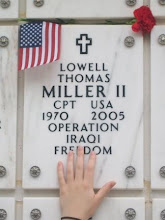
This relationship goes back 45 years to 1961. I served 13yrs, 3mo and 24 days on active duty in the US Navy. In those years there are about 10 people who I served with that I remember as if I met them yesterday. I reported aboard the U.S.S. Corry DDR-817 in March of 1961. The ship had just returned from a Med cruise. Jim McGill IC-2 was the only one who did not get transferred or discharged upon arrival. The day I reported aboard as an ICFA gave me one day to learn the ropes, before McGill left on leave; this left me as senior IC man.
Not to worry though; the ship was in port and not too much happening as the ship was on shore power and cold iron right. Hold your horses shipmate, we had to light off the following week and maneuver up the York river to Yorktown to offload ammo. A Mk 14 Sperry Gyro Compass (bottom left in Pic) has to be lit off. I had seen these contraptions in IC-A school, but I don't thing any of them actually worked, and we didn't spend much time in the practical operation. Thankfully I had a Chief Electricians Mate who knew how to light off all the equipment and he walked me through all the things that need to be done. Talk about baptism under fire. In retrospect though I am glad to have had perform without the help of a full compliment of IC-men, as I learned fast.
Going back to the Mk. 14 Gyro. You had to attach a vacuum pump to the rotor housing to vacate all the air. In a perfect world the dumb thing would hold a vacuum of 32 in of mercury. But nothing in the Navy was perfect, (except the people I hung out with) so before lighting off the gyro you had to pump the air out. We were happy with 28 in. Of mercury. Another thing that is critical, was the course indicator (the dial on top) had to be aligned to point as close to the direction that the ship was headed. After all these preparations, you now light the gyro off. By the way if your are nautical I don't have to explain this language; if your not then try to figure it out. After lighting off, the course indicator will "precess" which means it will go to the left of the course, then right of the course and continue this procedure, each time going shorter distances on each side until it has "settled out". All this process is done the day before in case "Murphy" came aboard and it give you time to react. It all went well.
I don't remember much of the trip to Yorktown, as I spent most of my time in the IC room on watch or on trouble calls; that's what they hired me for. Sometimes my memories run together. I wish I had all the letters that I wrote home while aboard, that would help me with the history. I believe Lenny Viehland (on the right in the pic) was the next IC man followed by Jeff Nauser. I will write more about them as they are two of the 10 I mentioned before.
I rode the Corry from March '61 to Nov. '62 when I was transferred to pre-commissioning of the USS Harry E. Yarnell DLG-17, with Lenny Viehland. We had advance to IC-3 in that time.
During my tenure aboard, we made one Med cruise, repair in Portsmouth Naval Shipyard, shake down to Gitmo where we were diverted to Belize, British Honduras when hurricane Hattie wiped out Belize in Sept 1961 (we gave away all our blankets aboard including the ones on our beds). We were on quarantine of Cuba during the Cuban missile crises when Lenny and I were picked up by helicopter and transferred to the USS Independence CVA-61 on our way to Newport RI and pre-com for the Yarnell. That would be the last time I was with Jeff.
We are working on a personal reunion.

